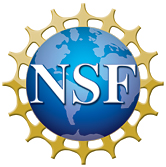Project 1111: D. T. Ksepka, S. Werning, M. Sclafani, Z. M. Boles. 2015. Bone histology in extant and fossil penguins (Aves: Sphenisciformes). Journal of Anatomy. 227 (5):611-630.
Abstract
Substantial changes in bone histology accompany the secondary adaptation to life in the water. This transition is well documented in several lineages of mammals and non-avian reptiles, but has received relatively little attention in birds. This study presents new observations on the long bone microstructure of penguins, based on histological sections from two extant taxa (Spheniscus and Aptenodytes) and eight fossil specimens belonging to stem lineages (†Palaeospheniscus and several indeterminate Eocene taxa). High bone density in penguins results from compaction of the internal cortical tissues, and thus penguin bones are best considered osteosclerotic rather than pachyostotic. Although the oldest specimens sampled in this study represent stages of penguin evolution that occurred at least 25 million years after the loss of flight, major differences in humeral structure were observed between these Eocene stem taxa and extant taxa. This indicates that the modification of flipper bone microstructure continued long after the initial loss of flight in penguins. It is proposed that two key transitions occurred during the shift from the typical hollow avian humerus to the dense osteosclerotic humerus in penguins. First, a reduction of the medullary cavity occurred due to a decrease in the amount of perimedullary osteoclastic activity. Second, a more solid cortex was achieved by compaction. In extant penguins and †Palaeospheniscus, most of the inner cortex is formed by rapid osteogenesis, resulting an initial latticework of woven-fibered bone. Subsequently, open spaces are filled by slower, centripetal deposition of parallel-fibered bone. Eocene stem penguins formed the initial latticework, but the subsequent round of compaction was less complete, and thus open spaces remained in the adult bone. In contrast to the humerus, hindlimb bones from Eocene stem penguins had smaller medullary cavities and thus higher compactness values compared with extant taxa. Although cortical lines of arrested growth have been observed in extant penguins, none was observed in any of the current sampled specimens. Therefore, it is likely that even these ‘giant’ penguin taxa completed their growth cycle without a major pause in bone deposition, implying that they did not undergo a prolonged fasting interval before reaching adult size.Read the article »
Article DOI: 10.1111/joa.12367
Project DOI: 10.7934/P1111, http://dx.doi.org/10.7934/P1111
| This project contains |
|---|
Download Project SDD File |
Currently Viewing:
MorphoBank Project 1111
MorphoBank Project 1111
- Creation Date:
08 January 2014 - Publication Date:
16 September 2015 - Media downloads: 10

This research
supported by
Authors' Institutions ![]()
- National Museum of Natural History, Smithsonian Institution
- Bruce Museum
- Des Moines University
- Drexel University
- Stony Brook University
- North Carolina Department of Environment and Natural Resources
Members
| member name | taxa |
specimens |
media |
| Daniel Ksepka Project Administrator | 1 | 2 | 44 |
| MorphoBank Curator Full membership | 0 | 0 | 0 |
| Sarah Werning Full membership | 4 | 9 | 12 |
Project has no matrices defined.
Project downloads 
| type | number of downloads | Individual items downloaded (where applicable) |
| Total downloads from project | 337 | |
| Document downloads | 4 | Smithsonian Copyright Permission (4 downloads); |
| Project downloads | 323 | |
| Media downloads | 10 | M323732 (1 download); M324163 (1 download); M323886 (1 download); M326291 (1 download); M324166 (1 download); M324165 (3 downloads); M324164 (1 download); M324161 (1 download); |

